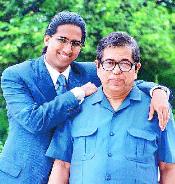PRINCE2 is the de facto methodology for project management. It encapsulates proven techniques for running and delivering successful projects; practices that have been fine-tuned over thirty years.
What does it mean to achieve PRINCE2 project management certification? Here we take a look at what is involved in attaining certification and why organisations and individuals see PRINCE2 as the logical choice for delivering projects.
Why Choose PRINCE2?
 There are many other methodologies for managing projects other than PRINCE2 of course. A software engineer looking to move into project management might also look at one of the Agile techniques. A manufacturing specialist could consider training in Lean Six Sigma. However, PRINCE2 is more widely used; it’s a world-class qualification that empowers a project manager to work in different industries around the globe.
There are many other methodologies for managing projects other than PRINCE2 of course. A software engineer looking to move into project management might also look at one of the Agile techniques. A manufacturing specialist could consider training in Lean Six Sigma. However, PRINCE2 is more widely used; it’s a world-class qualification that empowers a project manager to work in different industries around the globe.
To an organisation:
- PRINCE2 has been road tested and tuned for over 30 years. It’s a mature methodology that provides the project with a solid foundation.
- It facilitates breaking a large project into smaller, manageable stages. Goals can be defined and achieved, reassuring the client that the project will be successful.
- PRINCE2 encourages discipline around roles and responsibilities. This includes internal roles such as the Project Sponsor and Project Board, as well as external stakeholders. Everyone involved with the project has clarity about their own authority and that of other contributors.
- Everyone uses a common language and approach to delivering the project, removing ambiguity and miscommunication.
- Risks are fully addressed, reducing the chances of the project failing.
- The methodology can be tuned to the specific needs of the project; it can, therefore, be applied to projects of any size and complexity, anywhere in the world.
- PRINCE2 provides a step-by-step approach from initiation through to project closeout.
- All changes are managed, whether as a result of stakeholder requirements, resources or circumstances.
- PRINCE2 certification is available from reputable training providers and accredited by PeopleCert. It is one of (if not the most) recognised project management methodologies in the world.
To the individual:
- A PRINCE2 certification is a highly respected, professional qualification. It can open up opportunities for jobs worldwide, enabling project managers to deliver high profile projects in different industries and locations.
- It’s a transferrable skill, an enabler for career change and progression.
- It brings gravitas, conferring authority in leadership and decision making.
- It demonstrates a commitment to learn, even for a project manager with many years of experience.
- It’s a pedigree, allowing a self-employed project manager to apply for a contract position.
What certifications are available?
PRINCE2 Foundation is an entry-level qualification, for delegates to attain a good understanding of the methodology and how it is applied. Content is based around the key PRINCE2 concepts: Principles, Processes and Themes.
The principles are:
- Continued business justification. The project must remain viable and achievable and this must be verified by regularly asking the question: “Are the benefits still worth the risks and costs?”
- Learn from experience. Best practice evolves by learning from both successes and mistakes. The project manager uses techniques to identify, document and distribute knowledge gained during the project.
- Defined roles and responsibilities. Everyone involved with the project must be clear as to what is expected of them.
- Manage by stages. The project must be broken into at least two stages, each one being robustly planned, monitored and controlled.
- Manage by exception. PRINCE2 establishes six project objectives: scope, time, cost, benefits, quality and risk. Limits are set and authority agreed so that day-to-day decisions can be taken without recourse to senior management.
- Focus on products to reduce the likelihood of client disputes or dissatisfaction.
- Tailor to suit the environment, based on the project’s geography, complexity and context.
Processes support the lifecycle from starting up a project, through initiating, directing and controlling, to project closeout.
The Themes
Themes are areas of knowledge, used to put the principles into practice and to keep the project on track. They are:
- Continued justification by reference to the business case.
- Organisation based upon defined roles and responsibilities.
- Quality management, particularly by focusing on products.
- Planning to achieve targets.
- Risk management: identifying, assessing and controlling risks and unpredictable events.
- Handling change requests and issues.
- Checking and controlling progress.
PRINCE2 Foundation training takes place over 3 days, in addition to a pre-course workbook and homework. There is a one-hour examination on the final day.
PRINCE2 Practitioner is an advanced qualification. In addition to extending their knowledge, delegates will learn how to apply the methodology to real projects and will be qualified to work in the project manager role.
Delegates must have already completed the PRINCE2 Foundation qualification, a pre-course workbook and essential reading from the Managing Successful Projects using the Axelos PRINCE2 manual. Training takes place over two days, with a 150-minute exam on the final day.
A combined Foundation and Practitioner course is also available, running over five days and including both exams.
PRINCE2 certification is valuable to both organisations and individuals. Whether it’s a business, planning to standardise on its methods, or a contract project manager wishing to grow their CV, PRINCE2 certification is evidence of robust project management capabilities.
Article Submitted By Community Writer






